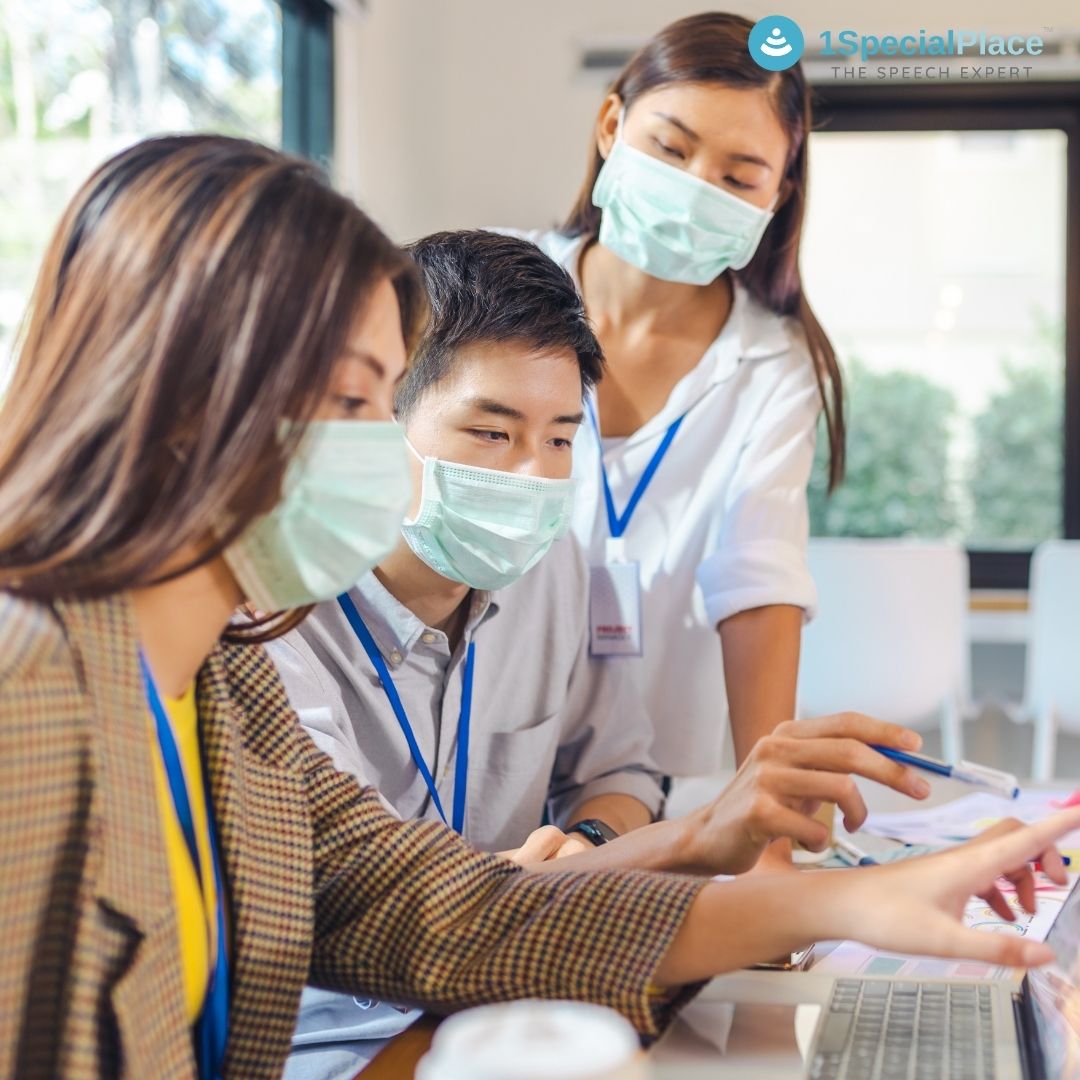
Effect of face mask on voice production during COVID-19 pandemic
Effect of face mask on voice production during COVID-19 pandemic
Usage Ever wondered if wearing a mask has any effect on your voice production and communication in general? Read more to find out what researchers Amanda Shekaraiah Sheela and Suresh Kiran have found……
Read the article published in the Journal of Voice
Early 2020 saw the onset and spread of the Coronavirus Disease more commonly known as COVID-19. It became normative to put on a mask on all occasions of any kind of interaction in public. The World Health Organisation (W.H.O) even recommended double masking and maintaining appropriate social distancing in all public places. The masks available in the market are of different types and materials and tend to alter the voice characteristics of the speaker. This can therefore impair optimal communication
What was the purpose of the study?
The authors of this study aimed to provide a comprehensive summary of research across the globe regarding the effect of wearing different masks on healthy individuals’ voices. The aim was to educate individuals regarding the selection of appropriate masks, without considerable aberrations of voice in order to have optimal communication.
Why was this study initiated?
After COVID-19 hit the world, the authors initiated this study. They found some important findings related to voice and use of masks. They are listed below:
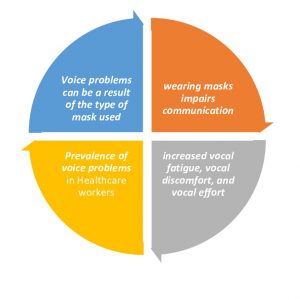 – wearing masks impairs communication in medical and non-medical healthcare workers.
– wearing masks impairs communication in medical and non-medical healthcare workers.
-Self-perceived symptoms of increased vocal fatigue, vocal discomfort, and vocal effort in individuals who wear the mask for professional activities compared to essential activities have also been reported
-Prevalence of voice problems can vary from mild to severe, in healthcare workers wearing a mask during this pandemic [
-Voice problems can be a result of the type of mask used, as these masks vary in terms of composition, filter, fitting type, and thickness (layers).
What is a Voice Disorder?
 A voice disorder is present when an individual expresses concern about having an abnormal voice that does not meet daily needs—even if others do not perceive it as different or deviant (American Speech-Language-Hearing Association [ASHA], 1993; Colton & Casper, 1996; Stemple, Glaze, & Klaben, 2010; Verdolini & Ramig, 2001). Read more at Voice disorder
A voice disorder is present when an individual expresses concern about having an abnormal voice that does not meet daily needs—even if others do not perceive it as different or deviant (American Speech-Language-Hearing Association [ASHA], 1993; Colton & Casper, 1996; Stemple, Glaze, & Klaben, 2010; Verdolini & Ramig, 2001). Read more at Voice disorder
How was this study done?
The authors searched extensively and analyzed specific details in published research on these lines.
What were the results of the study?
-
Self-Reported Measures of Voice
- Individuals who wore a mask for their professional activities, as well as essential activities, perceived significant symptoms of voice problems in terms of vocal fatigue, discomfort, and effort.
- Healthcare professionals with higher working hours reported more problems
- Nurses reported more voice-related problems than Physicians, Medical Residents, and Speech-Language Pathologists.
Health-care professionals have a potential risk of developing voice disorders based on their mask characteristics (duration, type, and use) and working characteristics (no. of working hours & working place).
Acoustic Measures of Voice
Instruments record the Acoustic measures of voice. These are physical aspects of our voice.
1. Fundamental Frequency
- Usage of a mask has no effect on the pitch (fundamental frequency) of our voice
2. Intensity
- Mask attenuates the intensity (loudness of our voice) of the voice. The use of a mask leads to a pressure drop across the mask. This results in reduced airflow intake. This leads to difficulty in respiratory-laryngeal systems while speaking.
- Using a mask also leads to altered self-auditory feedback. This leads someone to speak softly with lesser intensity.
Read blog on Voice Therapy in the Context of the COVID-19
In general, a mask user has increased demand and overload to the voice-producing mechanism to compensate for the effects of a mask (acoustic attenuation, breathing difficulty, altered feedback) along with social distancing on voice projection.
But, those individuals who speak wearing the mask for a prolonged time, compensating for these effects along with improper vocal adjustments might misuse or abuse their voice. Such users self-perceive the increased vocal effort, discomfort, fatigue, and also are at risk for developing voice disorders.
3. Perturbation and Noise Related Measures
- Most studies did not report any effect of mask on Noise-related measures of the voice.
- However, findings on amplitude attenuation of the voice signal across various healthcare professionals were interesting
- The attenuation measured was highest for transparent masks followed by cloth masks with varying material and weave, N95, surgical mask, and KN95
There is a direct relationship between breathability and acoustic performance of the mask during speech production. Hence, manufacturers could consider (re) designing the masks with reduced sound attenuation without compromising droplet blocking efficiency.
4. Aerodynamic Measures of Voice
These help us understand the coordinated nature of respiratory and voice-producing apparatus (laryngeal system) during speech production.
- Most studies did not find any significant differences between voice-respiratory characteristics in ‘mask’ and ‘no mask’ condition across various healthcare professionals.
This implies that wearing a surgical mask doesn’t significantly influence the efficiency of the respiratory-laryngeal system during speech production.
So, What kind of mask do I choose to reduce or avoid any voice-related problems?
- The surgical mask is better compared to other masks for effective voice production.
- Surgical Mask is advisable for everyone (including health professionals) when not in very close contact with the patient.
- Further, in a direct teaching, offline classroom scenario “surgical mask” can reduce the vocal load of teachers, smoothen the teacher-student interaction, and facilitate student learning.
Vocal healthcare strategies
- avoiding speaking in background noise,
- using a microphone along with the mask,
- using augmentative alternative communication (AAC) for optimal voice production.
- Get more Voice care tips for Covid 19
Bottomline
Although wearing a particular mask is an individual choice, users should be aware of the risk of developing voice problems with a mask.
- “Interventions for children and adolescents with stuttering” - April 7, 2023
- What is Speech Therapy and its effect? - December 21, 2022
- Dysphagic disorder in a cohort of COVID-19 patients - December 13, 2022


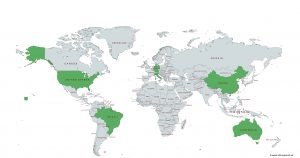
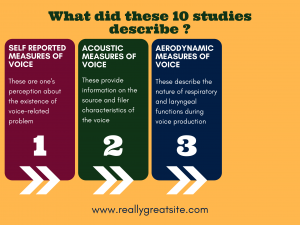
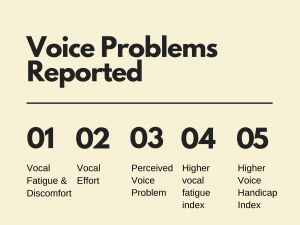
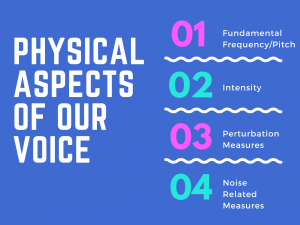
Leave a Comment
(0 Comments)